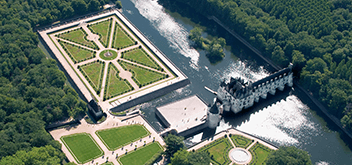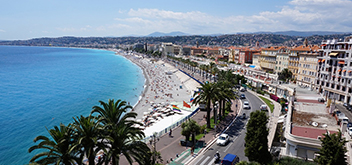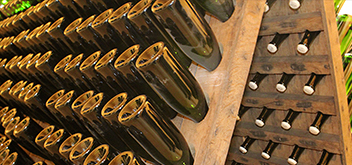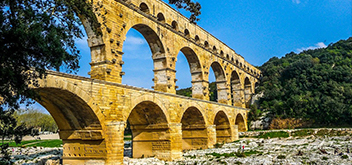No products
Blois

Favourite residence of the Kings of France. A residence for the Counts of Blois, the Dukes of Orleans, the Kings and Queens of France, and several princes in exile, the Royal Chateau of Blois is haunted by the memory of all the illustrious hosts lived here. Among these renowned figures are several counts of Blois who led the Crusades and the prince poet Charles d'Orléans. In 1429, Joan of Arc came in the chateau to have her banner blessed.
Beginning with Louis XII, who was born in Blois in 1462, the chateau became the favourite residence of the kings of France for more than a century. Blois was the first construction undertaken by François I and his successors often resided here. François II spent half of his brief reign at the Chateau and Henri III twice summoned the Estates General of the kingdom here in an attempt to end the Wars of Religion (1576 and 1588).
It was for this occasion that the chateau of Blois became the setting for the assassination of the Duke of Guise, ordered by the king on December 23, 1588.
The 16th century in Blois was also the century of the Queens: Anne de Bretagne, whose remarriage with Louis XII allowed the return of Brittany to France, followed by Claude of France, who gave her name to a variety of plums (« Reine Claude » that she cultivated in the gardens of Blois. After the brief reign of Mary Stuart, Catherine de Medici often resided here before dying in her apartments. The memory of the two wives of Henri IV still lingers in Blois: Marguerite de Valois, the so-called "Reine Margot", and Marie de Médicis, who escaped from the Chateau in 1619.
During the 17th century, the Chateau was a haven for princes and princesses in exile : Marie de Médicis, Gaston d'Orléans, Marie-Casimire de Pologne... The Chateau became a barracks just prior to the French Revolution. It was classified a national historical monument in 1840 and consequently renovated by Félix Duban, who restored its former splendour. The Château also became a cultural institution housing several museums.
 |  |  |
Royal Residence during the Renaissance
An urban palace.
The Chateau of Blois reached it's apogee in the first half of the 16th century under the sumptuous reigns of Louis XII and François Ier, who rebuilt the Chateau according to Renaissance taste and style.
On April 1498, the Duke Louis II d'Orléans (1462-1515) became King of France under the name of Louis XII. He immediately proceeded with the reconstruction of the Chateau of Blois where he had been born 36 years ago. The new wing, built in brick and stone and since named after the king, was described by the chronicler Jean d'Auton as being "so new and so sumptuous that it seems truly deserving of a King".
During his reign, Louis XII often spent the winter months at the Chateau of Blois. After having obtained the annulment of his marriage with Jeanne de France from the pope Alexandre VI Borgia, Louis XII married Anne de Bretagne, the Duchess of Brittany and the widow of his predecessor, in Blois on March 1499. This marriage allowed the king to maintain Brittany within the French orbit. Festivities and diplomatic encounters followed in succession in Blois : the wedding of César Borgia (1499), the reception of the Archduke Philip of Austria (1501), the wedding of the Marquis de Montferrat with Anne d'Alençon (1508), the engagement of Marguerite d'Angoulême, the sister of the future François I, with the duke of Alençon (1509), the visits of Machiavelli (1501 and 1510), etc. Anne de Bretagne died in Blois on January 9, 1514. Her funeral was celebrated in the collegiate church Saint Sauveur located in front of the Chateau. Not long afterwards, Louis XII gave the county of Blois to their daughter Claude and betrothed her to François I, the heir apparent.
After the death of Louis XII on January 1, 1515, François I (1494-1547) mounted the throne. A descendent of the Counts of Angoulême and the great-grandson of Louis of Orleans, François undertook the first construction campaign of his reign in Blois. From 1515 to 1519, he built a new wing in the Renaissance style with its famous projecting spiral staircase. His wife Claude spent most of her time in Blois, where she died in July 1524, at the age of barely 25 years old. In eight years, she had borne seven children for the king.
After his capture by the emperor Charles V at the battle of Pavie, François I spent one year in exile in Spain. When he returned to France, he began the construction of Fontainebleau and from then on preferred staying in Ile-de-France. Nevertheless, he did not abandon Blois: the repair work undertaken in 1534-1535 on the rafters of the Hall of the Estates General and the François I wing bear witness to the king's continued interest in the château. On October 18, 1534, the so-called «affair des placards », when Protestant pamphlets against the mass were posted on the door of the king's bedchambers at the châteaux of Amboise and Blois, incited the king to repress partisans of the religious reformation.
 Even though François I had transferred the furnishings and the library of Blois (in 1539 and 1544) Fontainebleau, the château continued on with its royal festivities: during a ball in Blois in April 1545, the poet Pierre de Ronsard met the beautiful Cassandre Salvati who inspired his famous «Sonnet to Cassandra". When François I died, his son Henri II succeeded him. After his coronation in Reims in July, 1547, Henri II officially entered the city of Blois in the following month accompanied with "naked women mounted on oxen" (a re-enactment of the abduction of Europa?) which shocked several observers. A great tournament was organized at the château. In 1550, Henri II had interior work done on the "logis neuf» (François I wing). For the occasion of a double wedding celebrated in Blois in April, 1556, Queen Catherine de Medici organized a representation of the tragedy Sophonisbe for the king. This was the first play performed according to the classical rules of three unities. The accidental death of Henri II during a joust in Paris in July 10, 1559, marked the end of the "Fair 16th century », and the beginning of the civil and religious strife of the Wars of Religion in the kingdom of France.
Even though François I had transferred the furnishings and the library of Blois (in 1539 and 1544) Fontainebleau, the château continued on with its royal festivities: during a ball in Blois in April 1545, the poet Pierre de Ronsard met the beautiful Cassandre Salvati who inspired his famous «Sonnet to Cassandra". When François I died, his son Henri II succeeded him. After his coronation in Reims in July, 1547, Henri II officially entered the city of Blois in the following month accompanied with "naked women mounted on oxen" (a re-enactment of the abduction of Europa?) which shocked several observers. A great tournament was organized at the château. In 1550, Henri II had interior work done on the "logis neuf» (François I wing). For the occasion of a double wedding celebrated in Blois in April, 1556, Queen Catherine de Medici organized a representation of the tragedy Sophonisbe for the king. This was the first play performed according to the classical rules of three unities. The accidental death of Henri II during a joust in Paris in July 10, 1559, marked the end of the "Fair 16th century », and the beginning of the civil and religious strife of the Wars of Religion in the kingdom of France.

















